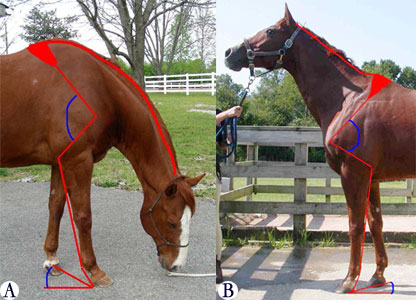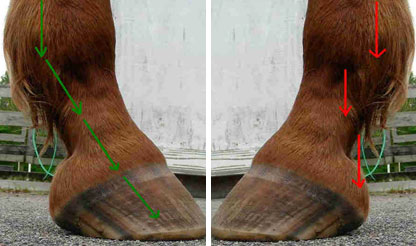 Most of the day is spent in nature in the grazing position, therefore head-low, with the center of gravity forward and the forehand bearing most of the weight. A horse who lives with the head down has more weight on the toe, and the toe wall is thicker (PicA).
Most of the day is spent in nature in the grazing position, therefore head-low, with the center of gravity forward and the forehand bearing most of the weight. A horse who lives with the head down has more weight on the toe, and the toe wall is thicker (PicA).
Shoulder-forearm and heel to ground angle is larger than in a horse who has the head up (PicB). A horse who lives a lot with his head up, like most horses in a stall do, has more weight on the heel, and this creates underslung heels.

Forces acting on the hoof with the head up (right)
